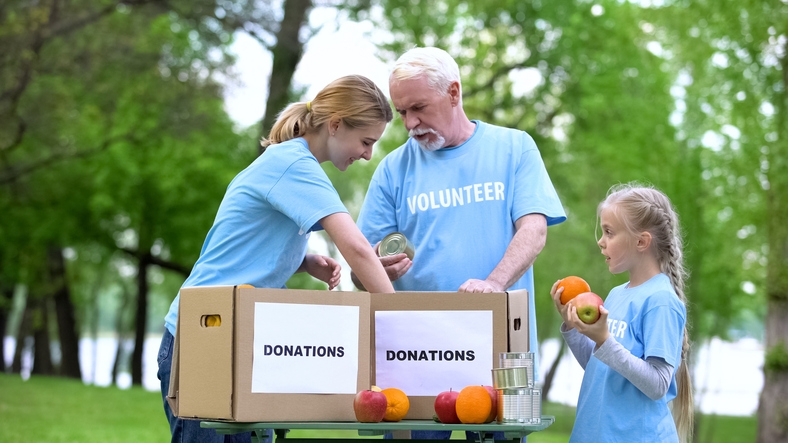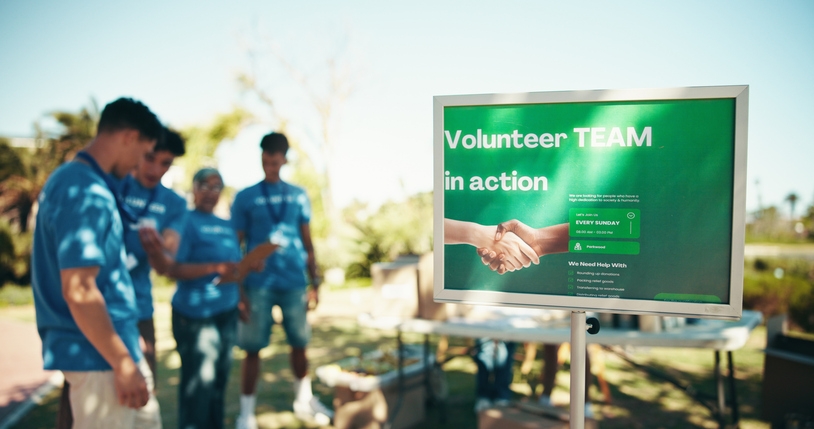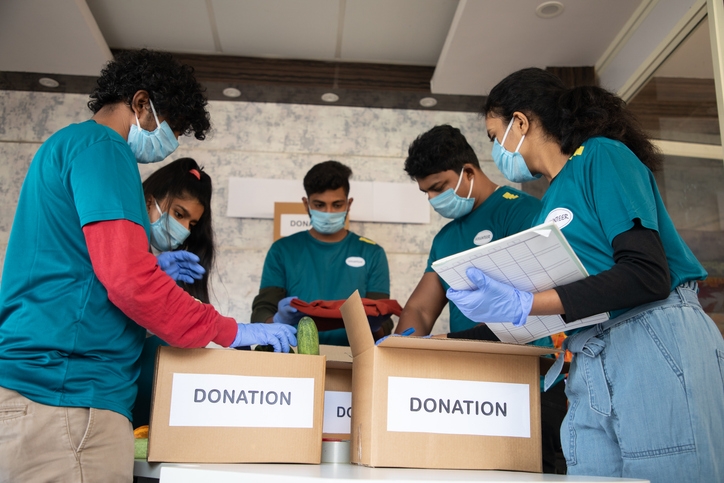From Modest to Mighty: 8 Small Charity Event Planning Tips That Raise More
Plan impactful small charity events with our comprehensive guide. Discover practical tips and strategies to engage your audience effectively. Read more!

From Modest to Mighty: 8 Small Charity Event Planning Tips That Raise More
Introduction: The Power of Small but Mighty
A few ways exist to make a small event outperform a large gala—and one of them is intimacy. A 25-person gathering in a borrowed art studio can sell tickets, recruit volunteers, and raise more than a 200-guest ballroom fundraiser.
Why? Because small non-profit events deliver all the features big events struggle to match—face-to-face connection, powerful storytelling, and a laser focus on your mission.
This guide shows you how to plan a small fundraising event so personal and creative it not only meets your financial goals but leaves a lasting imprint on your community.
1. Create a Micro-Mission to Exceed Your Fundraising Goal Without Blowing the Event Budget
Instead of making your small charity event planning about a vague, broad cause, anchor it to one ultra-specific project that your event attendees can fully fund by the day of the event.
How to Execute:
- Choose a Tangible Goal: Review past events to see which fundraising ideas generated the most engagement. Pick a single, clear outcome—something you can share in your promotional materials and on your event page.
- Budget with Precision: Create a detailed budget just for this micro-mission, factoring in venue costs, all the expenses, and exactly how much is needed to fund the project.
- Share Real Numbers: Instead of saying, “Help us raise funds for the arts,” say, “We need $3,200 to fund art therapy supplies for 40 children for a full year.” Break it down further (“That’s just $80 per child”).
- Involve Board Members & Local Businesses: Invite them to be “challenge donors” who match contributions from the event day up to a certain amount—turning smaller gifts into bigger impact.
- Show Progress in Real Time: Display a live donation tracker on a screen during your fun event or virtual event so guests can see the finish line approaching.
- Post-Event Follow-Up: In your post event survey or thank-you emails, include photos, testimonials, or receipts showing exactly what funds raised accomplished.
Why It Works: Guests can literally “see the finish line” of your fundraising goal. It makes your successful fundraiser feel personal, achievable, and worth talking about in social media shares.
2. Use Impact Positioning in Seating to Maximize Networking at Charity Events
Seating can make or break the impact of your fundraising event planning. Instead of random placement, intentionally position your event attendees to spark meaningful, high-value conversations that raise awareness and drive future support.
How to Execute:
- Segment Your Guest List: Categorize attendees into groups—longtime supporters, prospective guests, potential donors, local businesses, corporate sponsors, beneficiaries, and board members.
- Map Seating with Purpose:
- Seat your most passionate advocates next to first-time attendees.
- Pair potential corporate sponsors or target donors with beneficiaries or program leaders who can share personal impact stories.
- Position your strongest storytellers (staff, event volunteers, or program directors) strategically so their conversations reach different pockets of the room.
- Incorporate Story Prompts: Give table hosts promotional materials or “impact cards” with event details and talking points about your fundraising goals.
- Create a “Donor Experience Flow”: Begin with a warm, informal introduction, move into a short speaking opportunity from the event organizer, and end with an easy way to accept donations (QR code, pledge cards, or mobile fundraising tools).
- Link to Your Next Event: While mingling, subtly plant seeds about your upcoming event—offering early event tickets or VIP seating for your next charity event.
Why It Works: This transforms your nonprofit event from a standard dinner into a relationship-building platform, helping you not only meet your current fundraising goal but also secure significant funds and in kind donations for the future.

3. Design a Showstopper Moment That Makes Your Fundraising Event Unforgettable
Small non-profit events can’t compete with the spectacle of a huge gala, but they can deliver a moment so powerful it becomes the story guests share long after the event day. This is about creating an emotional anchor that ties directly to your event objectives.
How to Execute:
- Pick a Moment That Matches Your Mission: Choose something deeply relevant to your cause—not just flashy for the sake of it.
- Plan Around Your Target Audience: Ask yourself, “What would leave all the difference for this group?” For example:
- Reveal a surprise beneficiary from your non-profit organization in the audience who shares their personal story live.
- Do a coordinated “fundraising flash mob” where your staff, volunteers, and board members pledge as much money as they can on the spot—sparking a wave of giving.
- Host a reverse raffle where every attendee “wins” something small but meaningful, such as handwritten notes from beneficiaries or custom keepsakes funded by in kind donations.
- Integrate Into Your Marketing Plan: Tease the idea in your promotional materials without revealing the full surprise. This builds buzz and can boost ticket sales before the event venue even fills.
- Measure the Impact: Track funds raised, social shares, and local newspapers coverage after the successful fundraising event to see if it resonated.
Why It Works:A well-executed showstopper becomes a built-in marketing effort for future events, driving anticipation and loyalty.
4. Eliminate Dead Time to Keep Energy High and Donations Flowing on Event Day
In smaller non-profit event planning, you can’t afford slow stretches—every second should serve a purpose. Long gaps dilute your fundraising efforts and can cause you to lose the room before you’ve met your fundraising goal.
How to Execute:
- Set the Tone Immediately: Open the doors to live acoustic music or a local youth choir instead of a generic playlist. This turns arrival into an experience.
- Serve Food Strategically: Family-style dining at the event venue encourages organic conversation while minimizing downtime between courses. It also makes in person networking feel warmer.
- Replace Long Speeches with Impact Sprints: Instead of a single keynote, have multiple 3-minute stories from different voices—beneficiaries, volunteers, project managers, and local businesses.
- Build Momentum with “Mini-Moments”: Slip in quick fundraising games or prize draws while food is served or tables are cleared.
- Train Volunteers to Fill Gaps: Equip your event volunteers with conversation prompts and updates on raising funds so they can keep guests engaged between segments.
Why It Works: A tight, dynamic program maximizes the value of your event budget and keeps your target audience connected to your mission, leading to more successful events.
5. Integrate Fundraising Into the Program for Seamless Giving at Charity Concerts or Other Events
Many successful fundraising events lose momentum by saving the donation ask for the finale. Instead, weave opportunities to raise money throughout the type of event so giving feels natural and exciting.
How to Execute:
- Make Giving an Activity, Not a Pause:
- Host a cooking demo by a local chef where guests live-bid on each dish.
- Run a game where attendees “buy” clues to unlock a prize—combining entertainment with raising money.
- Install a pledge wall where guests commit an amount before entering, creating immediate buy-in.
- Align With Event Objectives: Ensure each activity ties back to your cause. For a charity concert, for example, auction backstage passes between performances.
- Blend Digital and In-Person Giving: Use QR codes on table cards for hybrid event formats so both in-person and virtual guests can participate.
- Show Immediate Progress: Display a live donation tracker so attendees can see all the difference their contributions are making in real time.
- Leverage Marketing Efforts Mid-Event: Mention your next event during fundraising activities to keep future engagement in mind.
Why It Works: Integrating giving throughout the event management process removes the awkward “now please donate” moment and often results in significant funds raised by the time the event organizer closes the evening thanks to seamless payment integration.

6. Make Participation the Heart of Your Fundraising Event Planning for Greater Engagement
For a successful event, especially in small-scale fundraising events, your guests shouldn’t just watch—they should do. When they actively contribute, they feel like part of your mission, which can boost donations and long-term loyalty.
Execution Ideas:
- Charity Build-a-Thon: Guests assemble hygiene kits, plant trees, or pack school supplies during the nonprofit event. These hands-on activities give instant impact and are easy to share on social media, doubling as marketing efforts.
- Impact Painting: Partner with a local artist who creates a piece influenced by guest input. Auction the final piece to raise money and give guests a tangible reminder of their role in the cause.
- Cause Crawl: Move through 3–4 small venues, each tied to a different aspect of your mission. This format boosts ticket sales, creates multiple speaking opportunities for different stakeholders, and encourages community partnerships.
- Assign a Project Manager: Have one dedicated person handle all the details—from securing materials to coordinating volunteer participation. This ensures the activities run smoothly and on schedule.
Why It Works: Active participation creates all the difference in attendee engagement and increases the likelihood they’ll attend other events you host.
7. Send Guests Home with Impact in a Bag to Extend Your Event Management Efforts Beyond the Night
Skip the generic pens and mugs. For nonprofit organizations, the best giveaways reinforce the mission and encourage further support after the successful event.
Impactful Takeaways:
- Personal Letters: A handwritten note from someone your nonprofit helps—perfect for securing sponsors in future fundraising efforts.
- Seed Packets with “Watch Change Grow” Labels: A low-cost, high-symbolism gift that reminds them their contribution grows over time.
- Custom Playlist: Curate songs tied to your cause’s theme. Include a printed card with a donation link, upcoming speaking opportunities, and dates for other events.
- Mission-Driven Merchandise: Items produced by beneficiaries or local artisans involved in your volunteer coordination program.
Why It Works: Guests leave with a story in their hands, which strengthens your marketing plan and can lead to repeat donations.
8. Close With an Emotional Hook That Inspires Guests to Accept Donations and Support Future Charity Events
Endings are powerful. In nonprofit event planning, your closing moment should not only thank guests but invite them into the next chapter of your work.
Closing Strategies:
- Next Week Preview: Share a short video of what’s happening in the week after the successful fundraising event—showing how today’s contributions will make all the difference.
- Community Acknowledgment: Invite all beneficiaries or volunteers on stage for a standing thank-you. This visual moment reinforces the human impact.
- Matching Gift Challenge: Announce a matching gift valid for only 48 hours after the event. This keeps momentum high and encourages guests to share with friends who couldn’t attend in person.
- Leverage Google Ad Grants & Local Media: Promote the challenge online and in local newspapers immediately after the event to reach new donors.
Why It Works: By pairing gratitude with clear next steps, you extend the emotional peak beyond the event’s end, driving both fundraising efforts and engagement for future events.

Conclusion: Why Small Charity Events Can Smash Fundraising Goals With the Right Event Management
In charity event planning best practices, bigger isn’t always better. Small nonprofit events allow for precision, personality, and power—if you design every detail to deepen connection and inspire action.
A well-executed 30-person gathering can bring in more funding, more new donors, and more long-term commitment than a large but generic fundraiser. The key is to focus on memorable moments, active participation, and tangible impact.
If you like, I can now layer in micro case studies—real examples of small charity events that raised surprising amounts—so the blog becomes even more inspiring and credible. That would really make this stand out in your Azavista series.
More Event Marketing and Promotion












